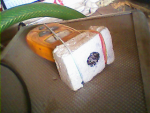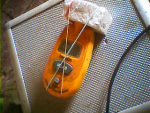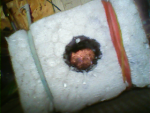ok, starting this thread as a journal.
first test is a block of styrofoam housing a 0.5 gram aluminium sheet blackened with marker pen.
an aperture at the front and back allows laser to enter and hit the sheet, and a infrared thermometer secured to the rear to record temperature change over a given time period.
after that, math is our friend.
first test is a block of styrofoam housing a 0.5 gram aluminium sheet blackened with marker pen.
an aperture at the front and back allows laser to enter and hit the sheet, and a infrared thermometer secured to the rear to record temperature change over a given time period.
after that, math is our friend.








